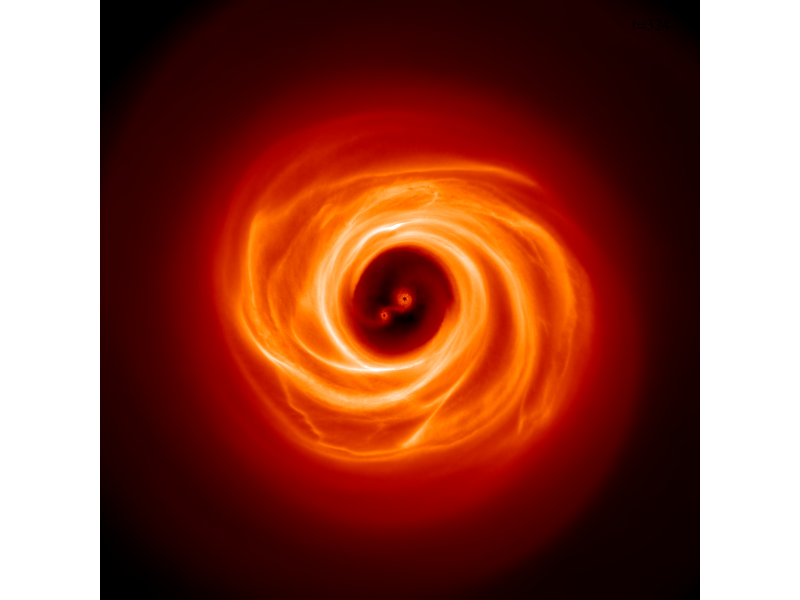UC astronomers perform simulation that allows the search for super massive binary black holes
Three researchers from the Institute of Astrophysics at the Universidad Católica de Chile made an important discovery which establishes that the light signatures of the binary black hole merger are different from what was previously predicted.
 Just over a year ago the LIGO collaboration reported the first detection of gravitational waves produced during the merger of two black holes of approximately thirty times the mass of the sun. However, there are vastly larger black holes called "super-massive", with masses millions of times larger and whose waves could be detected by new instruments.
Just over a year ago the LIGO collaboration reported the first detection of gravitational waves produced during the merger of two black holes of approximately thirty times the mass of the sun. However, there are vastly larger black holes called "super-massive", with masses millions of times larger and whose waves could be detected by new instruments.
Much information can be obtained from gravitational waves, the difficulty is to identify exactly where they are coming from, that is, where the black hole merger is occurring. To achieve this a light signal must be identified, for example: X-rays, radio waves, or simply visible photons, indicating their location. In the case of super-massive black holes, it is the expected gas around them that produces radiation by being "squeezed" or consumed. Professor Jorge Cuadra, from the UC Institute of Astrophysics (IA), and Xian Chen, now at Peking University, but until recently a postdoctoral researcher at IA, as well as dozens of astrophysicists around the world, have been studying what type of signals the black hole binaries can produce in the different phases of their evolution until they reach fusion.
Camilo Fontecilla, PhD student, has joined the group at UC to develop a project that specifically seeks to study how the thickness of the gas disk that forms around the primary black hole (the more massive) influences the light signal. The IA team discovered that the disk, as it becomes thicker, "will be less susceptible to the gravitational effect of the secondary black hole, producing what we call a 'second decoupling' and allowing a significant amount of material to survive the fusion process without being 'squeezed' or consumed. This will allow the luminosity of the system to gradually decrease, unlike the model considered so far that, assuming the disk disappeared completely, considered a sharp cut", says Camilo Fontecilla.
The discovery took place using one-dimensional simulations of a gas disk, developed by Fontecilla since 2014, that allows to study the long-term evolution of these systems. "The most remarkable thing is that with the changes that we propose to the current model, we can consider new alternatives for the temporal evolution of luminosity. According to our work there will still be material around the system when the black holes are very close together, and even after they merge. Therefore, it would be possible to obtain a counterpart of electromagnetic luminosity to the emission of gravitational waves that will be emitted in these stages of the process", explains Camilo Fontecilla, lead author of the study.
The results of the research were published in the Monthly Notices of the Royal Astronomical Society (MNRAS) at the beginning of 2017.






